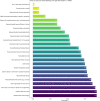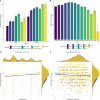Correlates of Health-Protective Behavior During the Initial Days of the COVID-19 Outbreak in Norway
- PMID: 33123045
- PMCID: PMC7573186
- DOI: 10.3389/fpsyg.2020.564083
Correlates of Health-Protective Behavior During the Initial Days of the COVID-19 Outbreak in Norway
Abstract
The coronavirus outbreak manifested in Norway in March 2020. It was met with a combination of mandatory changes (closing of public institutions) and recommended changes (hygiene behavior, physical distancing). It has been emphasized that health-protective behavior such as increased hygiene or physical distancing are able to slow the spread of infections and flatten the curve. Drawing on previous health-psychological studies during the outbreak of various pandemics, we investigated psychological and demographic factors predicting the adoption and engagement in health-protective behavior and changes in such behavior, attitudes, and emotions over time. We recruited a non-representative sample of Norwegians (n = 8676) during a 15-day period (March 12-26 2020) at the beginning of the COVID-19 outbreak in Norway. Employing both traditional methods and exploratory machine learning, we replicated earlier findings that engagement in health-protective behavior is associated with specific demographic characteristics. Further, we observed that increased media exposure, perceiving measures as effective, and perceiving the outbreak as serious was positively related to engagement in health-protective behavior. We also found indications that hygiene and physical distancing behaviors were related to somewhat different psychological and demographic factors. Over the sampling period, reported engagement in physical distancing increased, while experienced concern or fear declined. Contrary to previous studies, we found no or only small positive predictions by confidence in authorities, knowledge about the outbreak, and perceived individual risk, while all of those variables were rather high. These findings provide guidance for health communications or interventions targeting the adoption of health-protective behaviors in order to diminish the spread of COVID-19.
Keywords: COVID-19; Norway; concern; coronavirus; health protective behavior; perceived risk.
Copyright © 2020 Zickfeld, Schubert, Herting, Grahe and Faasse.
Figures




References
LinkOut - more resources
Full Text Sources
Miscellaneous

